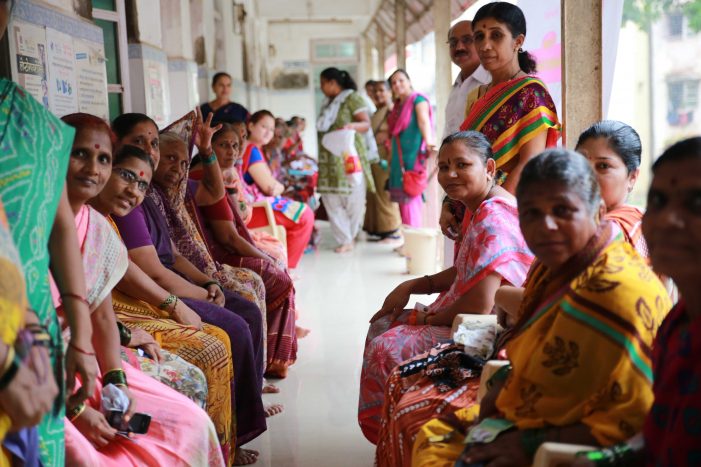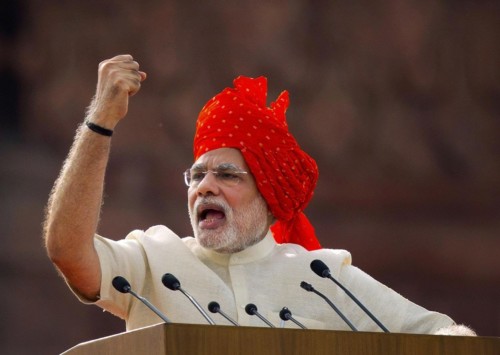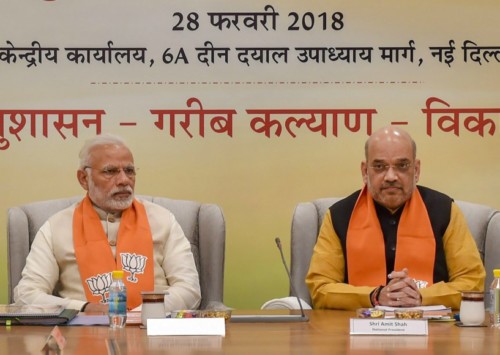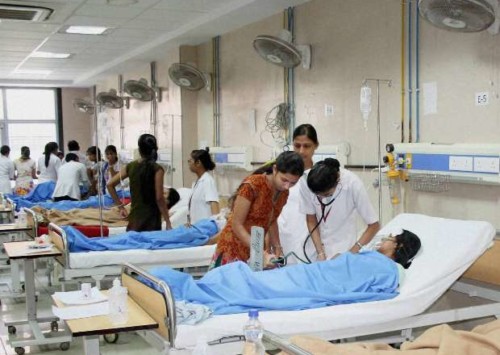Blind healthcare schemes in India

Women only account for 21 pc of national health insurance scheme (picture credit: Feminism in India)
Only 21 pc women reap the benefits of Ayushman Bharat, thus strongly highlighting how the government needs to focus on girls and women so that they receive their due share in the use of healthcare services.
In 2018 the government introduced the Pradhan Mantri Jan Arogya Yojna (PM-JAY) a national health insurance scheme that will cover primary and tertiary care for roughly 500 million Indians. After the year of its launch, the government analysed data of almost 16,000 hospitals for vascular and cardiothoracic surgeries in India.
The review shows that across the country women only account for 21 pc of all PM-JAY. Of the 1,395 health benefits packages under PM-JAY, 116 are women-centric, 65 are for only men while 1,213 are common to both. Of all hospital admission requests, 52 pc was for men and 48 pc was for women.
Even though this analysis is nothing short of alarming, it is not surprising considering the multifaceted nature of gender inequality present in this country. India has one of the highest gender inequalities in the world. Healthcare needs of girls and women-especially those not of reproductive age is considered less important than their brothers, sons and husband.
However, after analysing the problem, the government is doing all they can to take the necessary steps to improve the scheme, where more women are encouraged to register for their health insurance.
According to the National Health Authority (NHA), PM-JAY or Ayushman Bharat, which currently covers 40 pc of the population, is likely to be extended to all citizens. The NHA has further stated that the government is considering incentives to correct this gender imbalance by subsidising the cost of transportation, or loss of income borne on families when bringing a woman to the hospital for surgeries. Along with this, the government also plans to spread public awareness about gender gap disparity in treatment of heart diseases.
The lower status of women in certain sectors also allows for a lot of people to find loopholes in the scheme and thus fraud. According to the annual review of Ayushman Bharat, it was stated that, for a programme with the scale and complexity of PM-JAY, it is critical to put in place a strong anti-fraud mechanism not only for the financial perspective but also to safeguard people’s health from unethical malpractices. For this reason, the Anti-Fraud Unit was created. The National Anti-Fraud Unit finds ineligible people claiming medical cover by faking a relationship with parent beneficiary or pretending to be the beneficiary.
The primary question that is raised in such a scenario is that, why are women unable to access healthcare? For this, the policymakers must understand the underlying threads that weave the reality of most women and girls living in this country. There are barriers and constraints that women not only in remote areas but also in metropolitan cities face while accessing the benefits of these schemes. By not accounting for crucial factors around the realities of girls and women and what is for them, the potential impact of India’s public programme may be minimised.
For example, it is possible that a woman might not be financially independent or might not have the freedom to travel on their own which in turn, restricts her ability to seek primary healthcare services. Along with the fact that not all hospitals support Ayushman Bharat, it adds to the issue of accessibility. A woman residing in a rural area with no access to a government hospital near her, or a private hospital that supports Ayushman Bharat will most likely not treat her health problems.
The main concern here is accessibility and locating the hospitals that support Ayushman Bharat. Until and unless all hospitals support Ayushman Bharat, it will be difficult for the government to ensure all women receive the benefits of this scheme. In accessing tertiary health care services the government must undertake empirical research to understand such problems.












